George Wilkinson (1814-90)
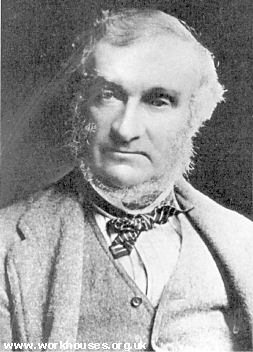
George Wilkinson.
George Wilkinson was born in Witney in Oxfordshire, the son of a carpenter and builder. His first workhouse commission was in his home town of Witney where Sampson Kempthorne had been invited to supply plans. However, Kempthorne upset the Witney Guardians several times, most notably in proposing a brick-built design for a town which was built almost entirely in local Cotswold stone. Wilkinson was given the architecural contract but failed to secure the building contract for his family firm.
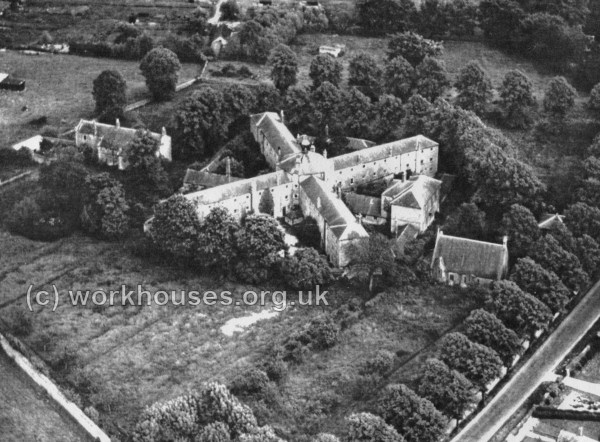
Witney workhouse aerial view.
Wilkinson went on to win competitions for designing the workhouses at nearby Thame, Woodstock and Chipping Norton, and then further afield at Chard and Radford.
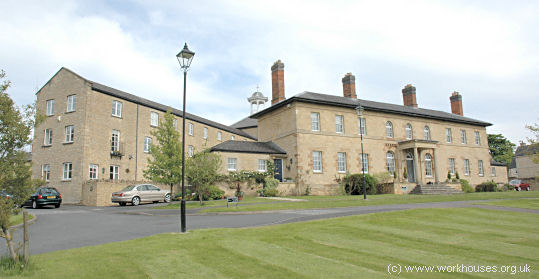
ChippingNorton.
© Peter Higginbotham.
Wilkinson also designed several of the early union workhouses erected in Wales. Many of his designs were in the Tudor style which would have been a very familiar style at his base in the university city of Oxford.
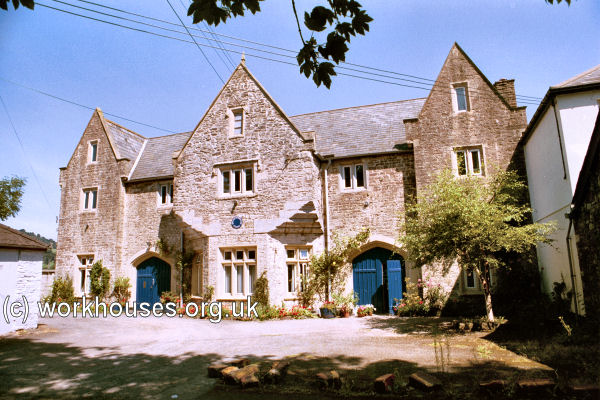
Abergavenny union workhouse
© Peter Higginbotham.
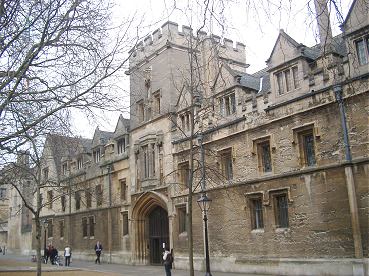
A typical Oxford collge
© Peter Higginbotham.
The majority of Wilkinson's designs were based on Sampson Kempthorne's model "square" plan. However, three (Chipping Norton, Witney and Wolverhampton) employed a novel St Andrews Cross variation of the square plan. A few others (Aberayron, Malmesbury, Thame and Woodstock) had non-standard layouts.
| George Wilkinson's English and Welsh Workhouses |
|
Aberayron Abergavenny Bridgend Bromyard Cardiff Chard Chepstow Chipping Norton Cricklade & Wootton Bassett Devizes Dorchester Gainsborough Hay Headington Honiton Ledbury Leominster Llandilo Fawr Llandovery Llanelly Malmesbury Neath Northleach Pembroke Pontypool Radford Stow-on-the-Wold Tenbury Thame Weobley Wincanton Witney Wolverhampton Woodstock |
In 1839, impressed by his work, the Poor Law Commissioners offered Wilkinson the mammoth job of designing all the workhouses in the 130 newly created 130 unions in Ireland. These were all based on variations of a standard plan and executed in Wilkinson's favoured plain Tudor style though with costs kept to a minimum, for example with earthen floors in the dayrooms since most of the occupants it was assumed "will be without shoes and stockings".
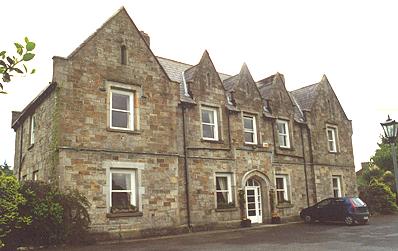
Swineford workhouse entrance block, County Mayo.
© Peter Higginbotham.
Wilkinson worked for the Poor Law Commission in Dublin until around 1850 and later designed a variety of other buildings such as the Harcourt Street railway station in Dublin. He returned to England in about 1888 and died at Ryde House in Twickenham on 4th October, 1890.
Bibliography
- Morrison, Kathryn The Workhouse, English Heritage, 1999.
- Dickens, AM (1976) The Architect and the Workhouse, Architectural review, CLX, No. 958, 345-52.
Unless otherwise indicated, this page () is copyright Peter Higginbotham. Contents may not be reproduced without permission.


